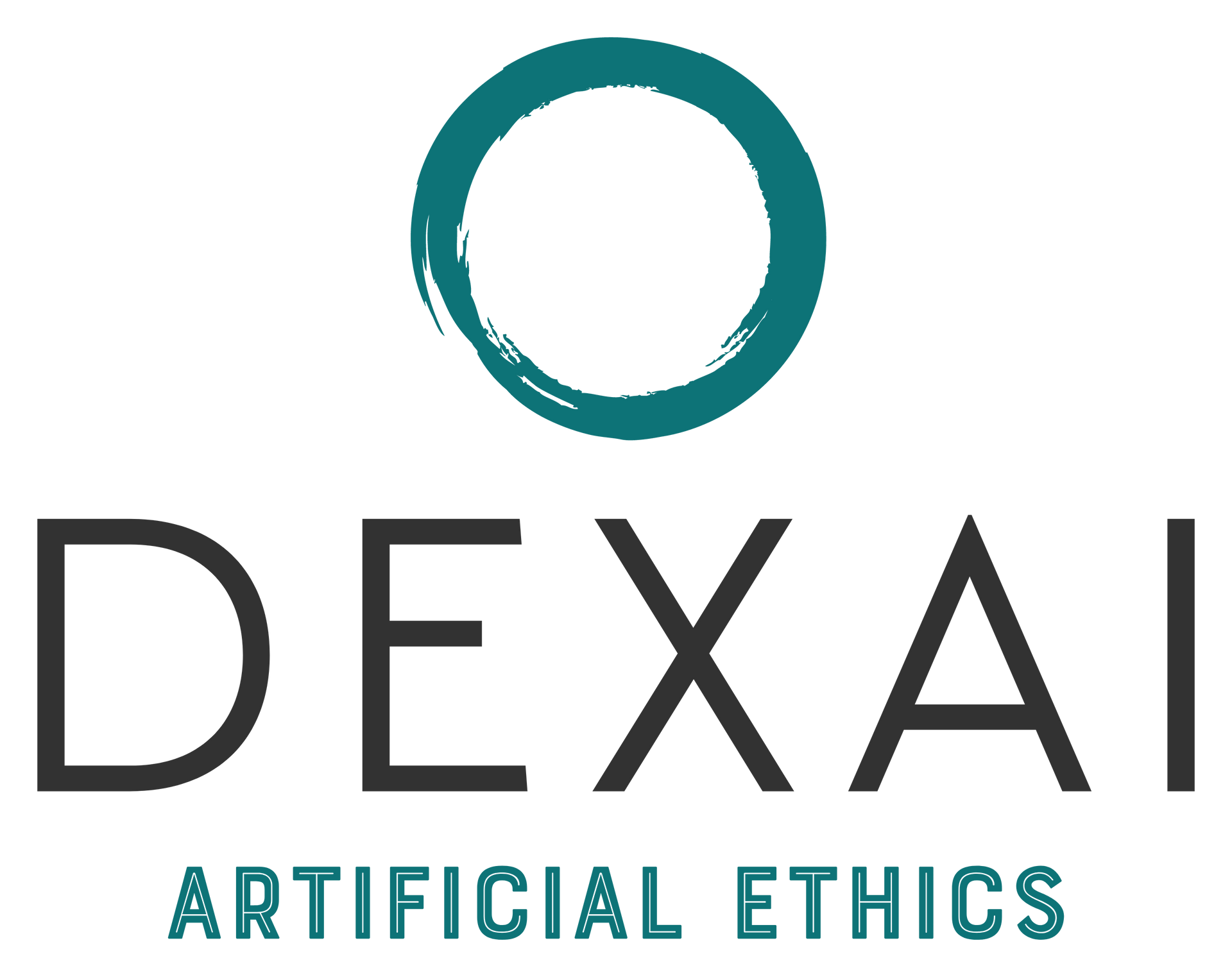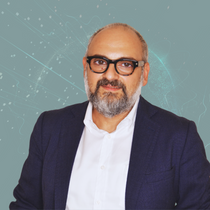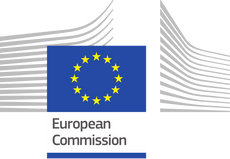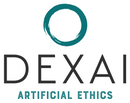Alata
Alice
Open Sans
Noto Sans
Bebas Neue
Great Vibes
Rock Salt
Exo
Belgrano
Overlock
Cinzel
Indie Flower
Staatliches
Roboto Slab
Lato
Noto Serif
Open Sans
Montserrat
Ubuntu
Rubik
Delius
Amiri
Montserrat
We embed AI ethics in your sustainability strategy
WE ARE BORN TO ADDRESS THE RELATIONSHIP BETWEEN ARTIFICIAL INTELLIGENCE, ethics & sustainability
We consider the social and environmental impacts of AI and are committed to reducing the environmental footprint of organizational activities, promoting ethical decision-making based on AI, protecting privacy and human rights, and eliminating discrimination and bias in AI
Co-Founders
Our team is an intersection of diverse skills and knowledge, which enables us to tackle a wide range of topics and complex issues comprehensively and in-depth.
Our Mission
-
Harness the power of technology to achieve a sustainable future
Incorporation of AI Ethics in Sustainability strategies and SDG targeting
-
Bridge the gap between Academia, Policymakers & Industry
Privileged access and credibility in Academia and EU bodies, translated into clear understanding of AI ethics requirements
-
Help build ethical, trustworthy and safe technologies
Multidisciplinary team, able to holistically understand the impact of technology on society
Join the companies already trusting us
EU Commission - Horizon projects
DEXAI-Blog&News

By DEXAI
•
07 Dec, 2022
During the WP TELECOM meeting on 25 October 2022, the Czech Presidency intends to present the changes made in the fourth compromise proposal and invites the delegations to indicate any outstanding issues with the text. Moreover, on 25 November 2025, the EU ministers green-lighted a general approach to the AI Act at the Telecom Council meeting on Tuesday (6 December). This approach, namely "Harmonised rules on artificial intelligence and amending certain Union legislative acts - General approach," was proposed on (25 November). In this report presents the latest changes proposed in this fourth proposal and compares them with the previous versions.

By DEXAI
•
07 Nov, 2022
Consider something you would like to create, recreate or imitate (art, photos, videos, music, stories, coding, a deepfake of a prime minister etc.), and generative AI will be happy to assist you. Does this mean that we have reached an era where saying just a few words enables you to create or replicate almost anything you can imagine (pretty much like a utopian science fiction novel)? And, for which price are we willing to have this assistance? This blog post will briefly summarise what generative AI is, and can do, its multiple types (i.e. Generative Adversarial Networks - GANS), how this differs from traditional AI, and its benefits and risks. We will conclude with a short introduction to Actor-Network Theory (ANT) by Bruno Latour as a theoretical and methodological approach to account for the relational nature of the society. Actors, in this theory, are not just humans or collectives of humans. Technical objects or artificial agents such as GANs, a class of deep neural network models able to simulate content with extreme precision, are also considered by ANT equally significant for the circulation of contents, beliefs and information inside a social system. GANs, have been primarily used to create media simulating human beings conveying politically-relevant content. What is Generative Artificial Intelligence? To what extent can we say AI can assist us in almost any task? In the face of the latest advancements in AI, the list of such tasks seems to be diminishing almost daily. Furthermore, even though we are still far away from achieving Artificial General Intelligence (AGI) or "Human-Level AI", as Kurzwei l (2005) would say, recent advancements in the sub-fields of AI, such as Natural Language Processing (giving computers the capacity to understand the text and spoken), and Computer Vision (computers see, observe, and 'understand), have shown that we are not the only ones capable of instantly and creatively generating images, videos, stories, music, or code from just a short text. This hype around generative technologies has been developing around tech giants such as Elon Musk with its DALL·E Open AI text-to-image technology. We can sub-divide generative AI's three famous models into: General Adversarial Networks (GANS) GANs are an emerging technology for both semisupervised and unsupervised learning and are composed of the i) generator and ii) the discriminator. The discriminator has access to a set of training images depicting real content. The discriminator aims to discriminate between "real" images from the training set and "fake" images generated by the generator. On the other hand, the generator generates images as similar as possible to the training set. The generator starts by generating random images and receives a signal from the discriminator whether the discriminator finds them real or fake. At equilibrium, the discriminator should not be able to tell the difference between the images generated by the generator and the actual images in the training set; hence, the generator generates images indistinguishable from the training set (Elgammal et al., 2017). AutoRegressive Convolutional Neural Networks (AR-CNN) AR-CNN is a deep convolutional network architecture for multivariate time series regression. The model is inspired by standard autoregressive (AR) models and gating mechanisms used in recurrent neural networks. It involves an AR-like weighting system, where the final predictor is obtained as a weighted sum of sub-predictors. At the same time, the weights are data-dependent functions learnt through a convolutional network. (Bińkowski et al., 2017). These transformers are designed to process sequential input data, such as natural language, with applications towards tasks such as translation and text summarisation, as in the case of Open AI with DALLE-E. Transformer-based Models A transformer is a deep learning (DL) model that adopts the self-attention mechanism, weighing the significance of each part of the input data. It is used primarily in the fields of natural language processing (NLP) (Vaswani et al., 2017) and computer vision (CV) (Brown, 1982). Where can we see generative AI? Beyond data augmentation, widely used in the medical field, generative AI can, just with a short paragraph of text, assist you with creating art and pictures ( open AI's DALL-E system that enables the creation of hyper-realistic images from text descriptions), videos ( Meta's text-to-video AI platform), AI avatars ( synthesia's text-to-speech synthesis which generates a professional video with an AI avatar reciting your text), music ( Jukebox neural net ) and much more. The magic behind most of this generative reality stands within Generative pre-trained Transformer (GPT-3) - a third-generation, autoregressive language model that uses deep learning to produce human-like texts and use the previous distinction to analyse them (Floridi, 2020). Simply speaking, we can understand it as 'text in — text out' - the model processes the text given and produces what it 'believes' should come next based on the probabilities of sequences of particular words in a sentence. Below we can see the realistic images entirely created by DALL·E from the prompt of an -> impressionist oil painting of an AI system having a drink at the beach
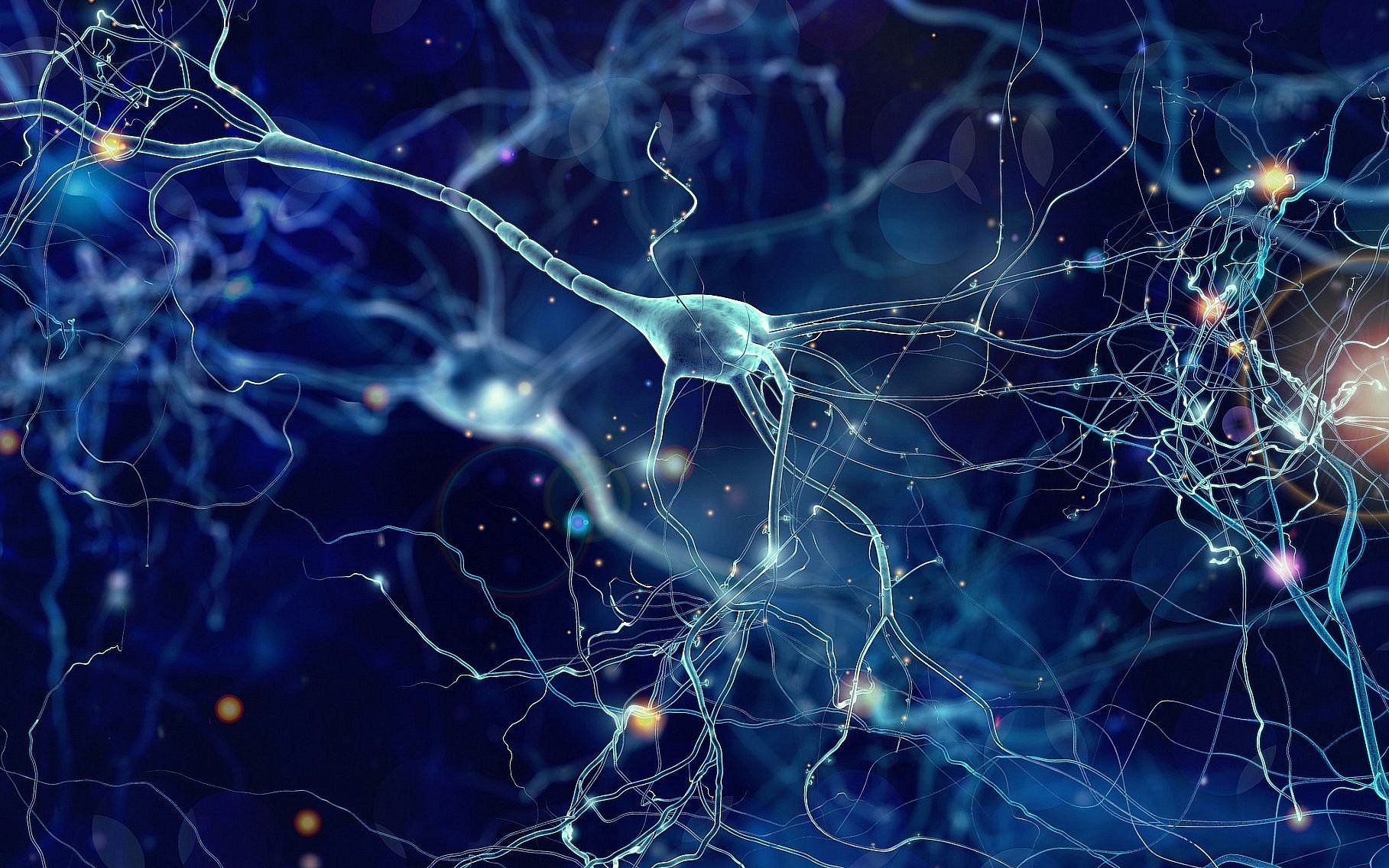
By DEXAI
•
15 Sep, 2022
On 12 August 2022, in Geneva, The Human Rights Council Advisory Committee (HCR) concluded its 28th session after advancing its studies on the impact of new technologies for climate protection on the enjoyment of human rights and the advancement of racial justice and equality. In such a session, the Committee decided to submit the human rights implications of neuro-technologies for consideration and approval by the Human Rights Council: "Towards the recognition of neuro-rights. " Lenca (2021) describe these rights as the essential normative guidelines for the defense and maintenance of the human brain and mind; in other words, the ethical, legal, social, or natural principles of freedom or entitlement relating to a person's cerebral and mental domain. Such considerations lead to concepts like "neuroethics," which can be defined as "the examination of what is right and wrong, good and bad about the treatment of, the perfection of, or unwelcome invasion of and worrisome manipulation of the human brain" (Safire, 2002). The unquestionable medical benefits that such advancements may bring should not, however, obscure the risk that they also pose. For instance, neural processes within neurotechnologies may be exposed to manipulation due to their unregulated commercialization. Equal access to neurotechnology for medical purposes has also been promoted, along with individual access to justice and adequate accountability mechanisms. All of which pose numerous ethical and legal concerns regarding our ability as individuals to govern our behavior or "psyche," as the ancient greeks would say, or the right to fair access to "mental augmentation". Furthermore, fundamental human rights such as the protection of "individual mental integrity and identity" may be threatened. They question whether such protection should be introduced as new human rights norms or as guidelines for interpreting or applying already-existing rights. Thus, it is suggested in the report that the United Nations (UN) and Human Rights Council should launch a public, transparent and inclusive debate among States, civil society, and other interested stakeholders. The session ultimately outlines their main research objectives and announces that the topic of neurotechnologies will be afresh at the 56th (July 2024) or 57th (September 2024) session of the Human Rights Council. In today's blog, we will summarize the 28th session's main points, which are outlined in the official document prepared by Milena Costas Trascasas on 12 August 2022. What can we define as neurotechnologies? "Today, the term ‘neurotechnologies’ refers to any electronic device, method or process conceived to access the human brain’s neuronal activity including the capacity to record, interfere or modify brain activity. These applications allow for a two-way connection (brain-computer interfaces) between the individual’s central nervous system (brain and spinal cord) and an electronic system. The aim is to collect information on the activity of neurons containing a representation of brain activity". A new generation of neurotechnologies is rapidly developing "Increasingly promoted as a necessary development that needs to be pursued for the good of humanity, such emerging technologies are paving the way to an incredibly lucrative business which may contribute to widen power asymmetries. Advancements in research are being fuelled by large quantities of public and private funding allocated on ‘brain’ initiatives. This massive scale of global investment is prompting a new technological race where States, businesses and other stakeholders are staking out positions. Even if many of these technologies are currently in an experimental phase, experts warn that we must be prepared for this to change very quickly. In coming years, neurotechnology will help to improve cognitive capacities by connecting the brain directly to digital networks. This will require not only the systematic collection of neural data but the decoding of thoughts deriving from the neural activity of the person". Lack of regulation - The ethical implications "The continued and unregulated development of some neurotechnologies poses a number of ethical, legal and societal questions that need to be addressed. These devices are being quickly developed and commercialized in an environment where responsible innovation cannot be granted. Neuro-rights also pose some concerns regarding “freedom of thought” and the “foundation of a democratic state ruled by law Nawrot (2019) . Furthermore, in a globalized market, national attempts to regulate neurotechnologies might not be sufficient. So far, only a few States have enacted legislation specifically aimed at protecting mental integrity and indemnity (Chile) or have prompted amendments to include neuro-data in the personal data protection laws (Spain, Colombia, Brazil)". The government in Chile is already stepping ahead. Its citizens must be safeguarded from technologies that are able to execute mind control, mind reading, or any other abnormal interference with their brains. This was possible thanks to a constitutional amendment that was passed by the National Congress of Chile and signed by the president. Thus, Chile's citizens are the first ever in the world to be granted with “neurorights”- which, "advocates say are made necessary by rapid advances in neurotechnology" (Gallucci, 2022). Potential solutions "The UN is in the best position to launch a public, transparent and inclusive debate among States, civil society and other interested stakeholders on the issue of neurotechnologies, which so far has been only treated at expert level. In this context, the Human Rights Council has a significant role to play and the Advisory Committee may be of great support in this respect. Given its quality as think-tank body, our Committee, is best placed to assess the human rights impact of these technologies and to make recommendations for action to Member States". A new challenge for Human-Rights "Experts suggest that a new set of rights should be recognized with a view to introducing “normative specifications related to the protection of the person’s cerebral and mental domain”, which includes individual mental integrity and identity. Here the question is whether such protection should be introduced as a new human rights norms or rather as standards of application or interpretation of existing rights, while reinforcing the applications of the principles on business and human rights and other specific initiatives in parallel. This assessment requires a careful and balanced analysis of the new norms that are being proposed as rights. It is true that specific standards may be needed to ensure the protection against interferences and misuses of certain mental aspects such as cognitive freedom, mental privacy, mental integrity and psychological continuity. The equal access to neurotechnology for medical purposes has also been promoted, together with individual’s access to justice and adequate accountability mechanisms. There are, however, other much more disputable interpretations, such as the claim that a right to fair access to “mental augmentation” should be recognized". We can differentiate between four new neuro-rights in accordance to (Lenca, 2021). the right to cognitive liberty (the first poses the right to mental integrity seems to have the broadest theoretical support and the most solid legal foundation) the right to mental privacy the right to mental integrity the right to psychological continuity Objective of the research proposal posed on 28th HCR session: Focusing on the legal, ethical, and societal ramifications of the various applications being developed, particularly outside the medical arena. The research of the Advisory Committee would give an overview of neurotechnologies' leading human rights issues. A thorough examination of the current framework can help identify the pertinent rules, applicable concepts, and standards and any gaps and difficulties. An evaluation of the opportunity and necessity to recognize additional rights, specifically the so-called "neurorights," will also be included in the study. It will analyze other options, such as the potential for shifting interpretation of the most pertinent rights, and explore what kind of normative instrument might be produced. The paper will then discuss how to create a cohesive governance and accountability structure. This difficult issue could be included on the agenda of the UN Human Rights Council thanks to a research that would help States grasp the consequences for human rights. It is necessary and timely to have a public discussion about this issue in order to decide what steps should be done going forward to prevent the use of these technologies against the goals and principles of the UN Charter and the Universal Declaration of Human Rights. The committee has concluded that "is ready and has the necessary expertise to continue discussions with a view to submitting a report on the human rights impact of neurotechnologies at the 56th (July 2024) or 57th (September 2024) session of the Human Rights Council"
